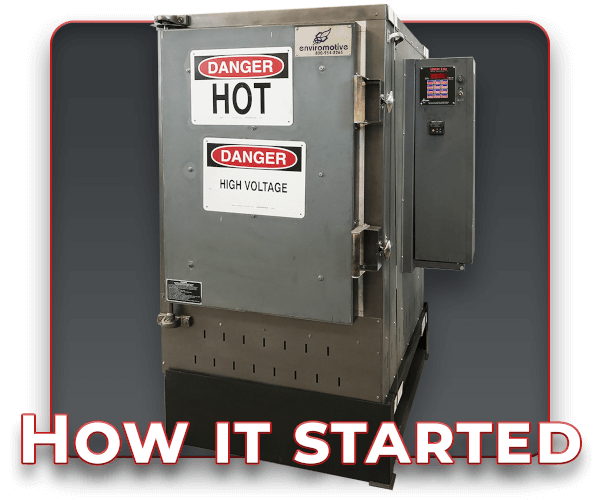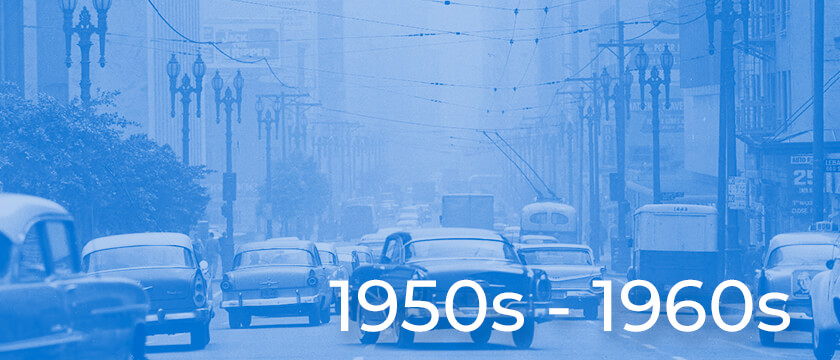
The Beginning: 1950s – 1960s
The growing awareness of air pollution and its detrimental impact on human health prompted the implementation of stringent regulations to curb vehicle emissions. The 1950s marked a turning point in this regard, with California’s study highlighting the role of automobiles in air pollution. This led to the establishment of the U.S. Environmental Protection Agency (EPA), which played a pivotal role in setting emission standards for vehicles, heavy-duty machinery, and other sources of air pollution.
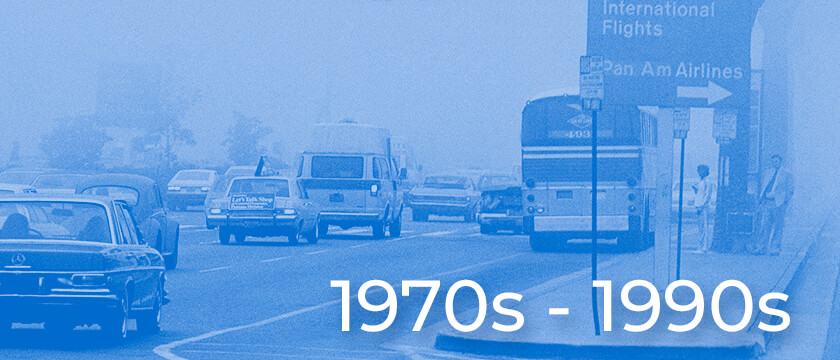
Pioneering Efforts for Cleaner Air: 1970s – 1990s
The 1970s witnessed significant advancements in addressing vehicle emissions. The EPA initiated fuel economy testing in 1971, paving the way for the development of emission-reducing technologies like exhaust gas recirculation valves. Transportation controls were implemented in major cities, and regulations to reduce lead content in gasoline were enforced. The mid-1970s saw the introduction of catalytic converters, dramatically slashing vehicle emissions. This decade culminated in revisions to the Clean Air Act, setting the stage for further emission reductions.
The 1980s saw an intensified focus on reducing vehicle emissions. Advanced three-way catalysts were introduced, enhancing emission reduction capabilities. Inspection and Maintenance (I/M) programs were implemented to ensure the proper functioning of emission control systems. Stricter emission standards were enforced, targeting NOx in heavy-duty engines and particulate matter from diesel-powered vehicles. Lead content in gasoline was drastically reduced, and fuel volatility limits were set to minimize evaporative emissions.
The 1990s marked a more collaborative approach to clean vehicular pollution. Tailpipe emission standards for HC and NOx were lowered, and standards for CO emissions at cold temperatures were set. The Partnership for a New Generation of Vehicles aimed to triple fuel economy without compromising on performance. Gasoline reformulation was implemented in certain areas to reduce harmful compounds. Lead was successfully banned from gasoline. Stricter standards for diesel engines were set, and National Low Emission Vehicles (NLEV) were introduced early. Sulfur standards in gasoline were lowered.
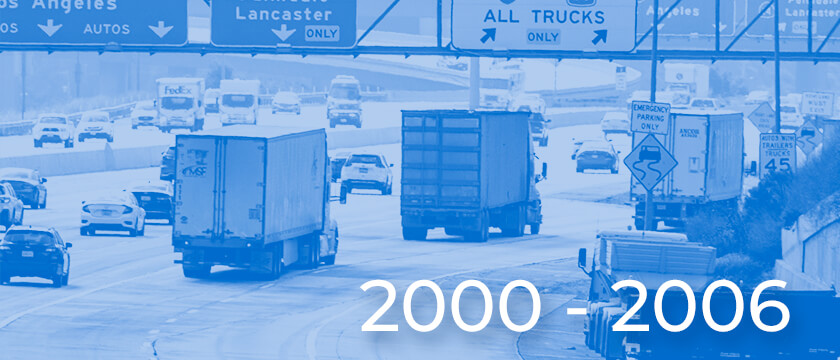
The Evolution of Diesel Emissions Control: 2000 – 2006
In the early to mid-2000s, the United States Environmental Protection Agency (EPA) embarked on a determined journey to address environmental concerns arising from various transportation sources, with a particular focus on diesel emissions. This period witnessed a series of groundbreaking changes that set the stage for the modern diesel emissions system.
2000: Setting the Stage for Change
The year 2000 marked a turning point in diesel emissions control. The EPA introduced stringent emission regulations for nonroad small engines, such as chainsaws and trimmers, effectively slashing HC and NOx emissions by 70%.
2001: Expanding the Scope of Regulations
In 2001, the EPA extended its reach by unveiling regulations to manage emissions from mobile sources. These regulations included new gasoline toxic emission performance standards and the identification of 21 mobile source air toxics. This comprehensive approach aimed to address a broader range of pollutants.
2004: A Multifaceted Approach
In 2004, the Environmental Protection Agency (EPA) embarked on a comprehensive initiative to address diesel emissions and promote cleaner transportation solutions. They helped schools get eco-friendly buses, made motorcycles produce half the pollution, tightened rules for marine diesel engines, teamed up with companies to make trucks more fuel-efficient, and lowered emissions from nonroad diesel engines.
2006: Enhancing Transparency and Accuracy
The year 2006 saw the EPA revamp the methodology for calculating fuel economy estimates, ensuring greater accuracy in MPG figures. Additionally, the agency introduced more informative fuel economy labels for specific heavier vehicles. These initiatives aimed to provide consumers with more reliable information on vehicle fuel efficiency.
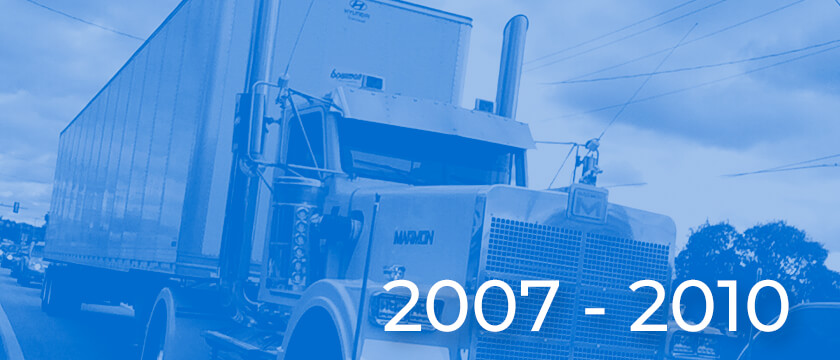
Genesis & Growing Pains: 2007-2010
From 2007 to 2010, the EPA continued its relentless pursuit of cleaner air by mandating the Diesel Emissions System (DES), a comprehensive system designed to significantly reduce PM and NOx emissions from diesel engines.
This period saw significant progress in reducing air toxins, boosting renewable fuel integration, and curbing diesel emissions.
2007: A Year of Progress on Multiple Fronts
The year 2007 marked a turning point in the fight for cleaner air. The EPA implemented regulations that:
- Reduced benzene levels in gasoline: This change helped improve air quality and reduced the risk of cancer for Americans.
- Curtailed emissions from cold-start vehicles and portable fuel containers: These actions resulted in cleaner air, particularly in urban areas.
- Established the Renewable Fuel Standard Program: This program, aligned with the Energy Policy Act of 2005, aimed to increase the use of renewable fuels in vehicle fuel, promoting energy independence and reducing greenhouse gas emissions.
2008: Targeting Diesel Emissions
In 2008, the EPA focused on curbing harmful emissions from diesel engines. The agency:
- Set stringent standards for particulate matter (PM) and nitrogen oxide (NOx) emissions from locomotives and marine diesel engines: These standards, which applied to both existing and newly built engines, mandated the use of advanced emission control technologies.
- Announced nearly $50 million in grants for clean diesel projects: This funding supported the development and deployment of clean diesel technologies, accelerating the transition to cleaner diesel operations nationwide.
- Mandated onboard diagnostic systems for large trucks: These systems monitored emission control systems and triggered alerts for necessary repairs and maintenance, ensuring cleaner truck emissions.
The EPA’s efforts between 2007 and 2010 laid the groundwork for significant improvements in air quality for Americans, largely driven by the introduction of the Diesel Emissions System. The DES marked a significant turning point in diesel emissions control, paving the way for cleaner and more environmentally friendly diesel engines.
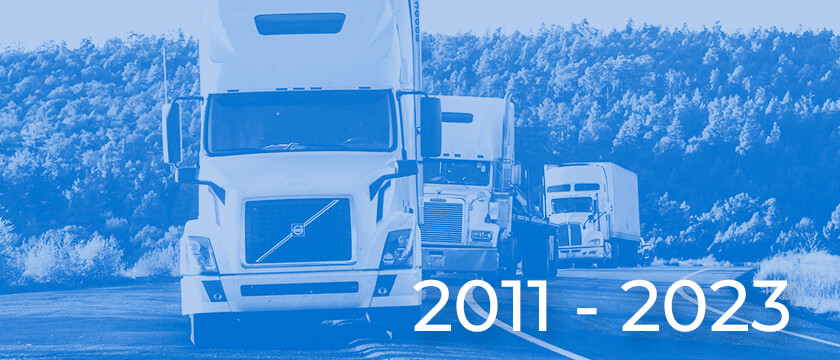
Innovations & Challenges for the DES: 2011 – 2023
From 2011 to today, the Diesel Emissions System (DES) for trucks has undergone significant innovations and advancements, driven by stricter regulations and a growing focus on sustainability. This has also presented big challenges for both manufacturers and users.
Advances in DES Technology:
Emission Control Technologies: The introduction of advanced emission control technologies like Diesel Particulate Filters (DPFs), Selective Catalytic Reduction (SCR), and Diesel Oxidation Catalysts (DOC) has dramatically reduced harmful pollutants like particulate matter (PM), nitrogen oxide (NOx), etc.
Learn about these terms & components here at our aftertreatment parts blog.
- Engine Efficiency: Engine designs have been optimized for improved fuel efficiency, which in turn reduces CO2 emissions and contributes to lower operating costs.
- On-board Diagnostics: Advanced on-board diagnostics monitor and alert drivers to potential emission control system problems, ensuring timely maintenance and preventing emission spikes.
- Telematics Systems: Telematics systems allow fleet managers to remotely monitor truck performance and emissions data, enabling them to identify issues early and implement proactive maintenance strategies.
Challenges Remain:
- High Costs: Implementing and maintaining advanced DES technology is expensive, which can be a barrier for some truck owners and operators.
- Complexity: The increased complexity of modern DES systems requires technicians to have specialized training and skills for proper maintenance and repair.
- Durability and Reliability: The long-term durability and reliability of some DES components, especially in harsh operating conditions, remains a concern for some users.
- Fuel Efficiency Trade-offs: While some advanced DES technologies improve fuel efficiency, others can lead to slight decreases, which can affect operating costs.
- Regulatory Landscape: The constantly evolving regulatory landscape requires manufacturers and users to adapt quickly to new standards and requirements.
Key components of the modern DES are:
- Exhaust Gas Recirculation (EGR): Reduces NOx emissions by recirculating a portion of the exhaust gas back into the engine’s intake system.
- Diesel Oxidation Catalyst (DOC): Oxidizes harmful hydrocarbons (HC) and carbon monoxide (CO) into less harmful substances.
- Selective Catalytic Reduction (SCR): Converts NOx emissions into nitrogen and water using a chemical reaction.
- Diesel Particulate Filter (DPF): Traps soot particles, preventing them from being released into the atmosphere.
Learn about these components here.
DPF Deletes: A Misguided Response
Despite the advancements in diesel emissions control technology, this time period saw the rise of DPF deletes, a practice of removing or disabling the DPF in diesel trucks. This practice, driven by concerns about maintenance costs and potential performance issues, was problematic for many reasons. Go in more depth on this topic in a recent REP blog article.

What’s Next for Diesel Emission Systems?
Looking past 2023, the United States Environmental Protection Agency (EPA) is proposing even stricter rules to reduce emissions from heavy-duty trucks. These rules aim to lower nitrogen oxides (NOx), particulate matter (PM), and carbon dioxide (CO2) emissions from these vehicles.
Key Changes
- Starting in 2027, manufacturers will need to produce trucks that emit significantly less greenhouse gas (GHG) emissions.
- Manufacturers can choose from various ways to meet the new standards, such as using cleaner technologies or buying emissions credits.
- Advanced emission control systems will become mandatory on heavy-duty trucks.
Looking Forward:
Despite challenges, the development and implementation of advanced DES technology are vital for achieving cleaner air and reducing harmful emissions. Ongoing research and development efforts are focused on:
- Further reducing NOx and PM emissions: This includes exploring new technologies and optimizing existing ones.
- Improving fuel efficiency: Balancing emission reduction with fuel efficiency remains a key challenge.
- Lowering costs: Making DES technology more affordable will encourage wider adoption.
- Developing standardized diagnostics and repair procedures: This will ensure consistent maintenance and improve the reliability of DES components.
The future of DES for trucks is promising, with the potential for even cleaner air and lower emissions. However, overcoming the existing challenges and continuing to innovate will be crucial for achieving a sustainable future for the trucking industry.
Get the right DPF Cleaning solution for your FLEET.
Give us a call. Get Answers.
Use our ROI tool to see how quickly this investment can save your fleet time and money. Financing is now available. Check it out!
Call or email to schedule a meeting with our National Sales Manager, Anthony Soto.


